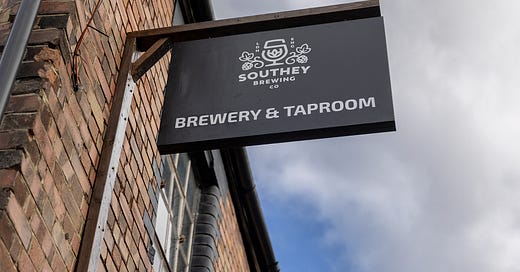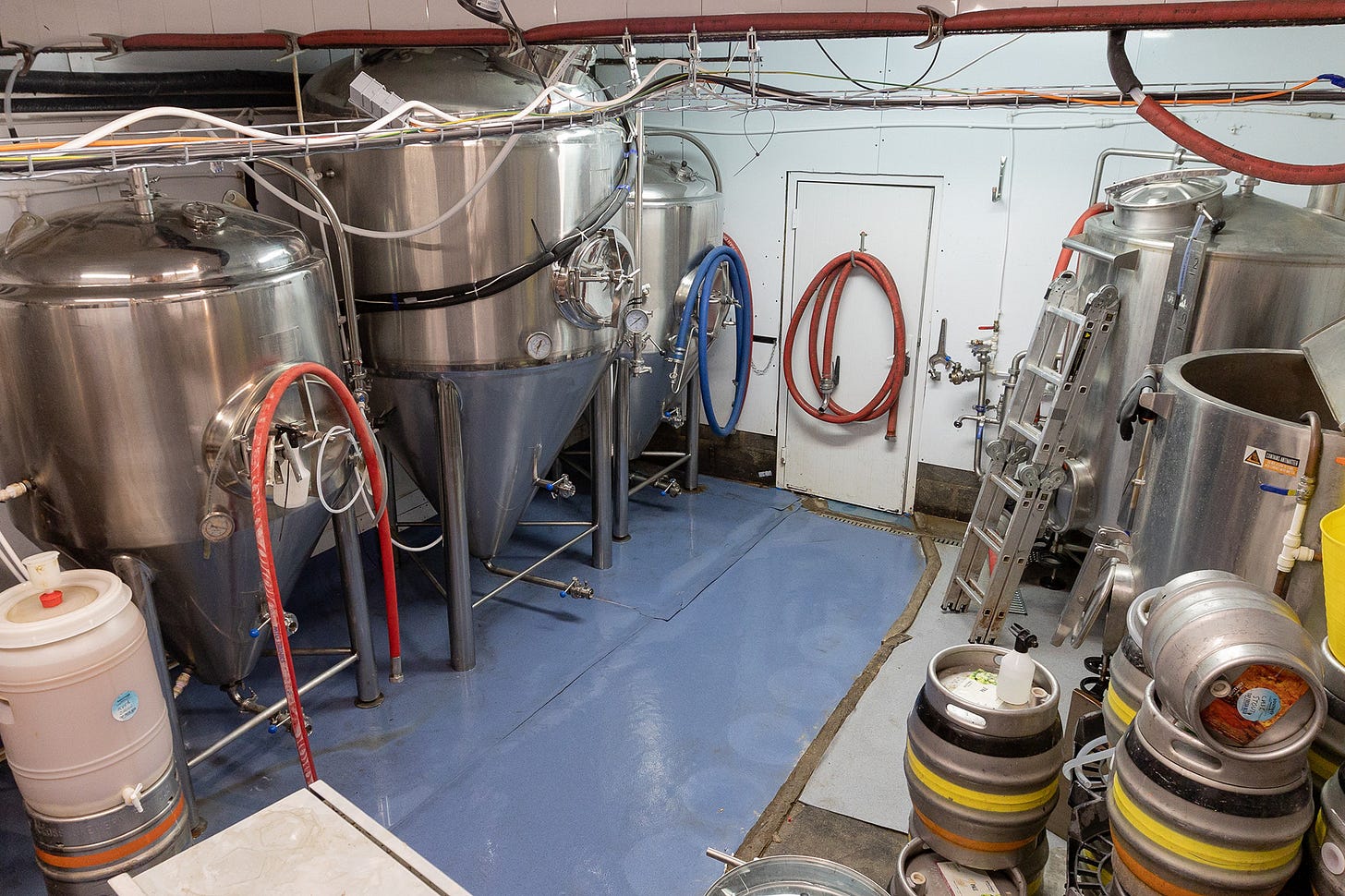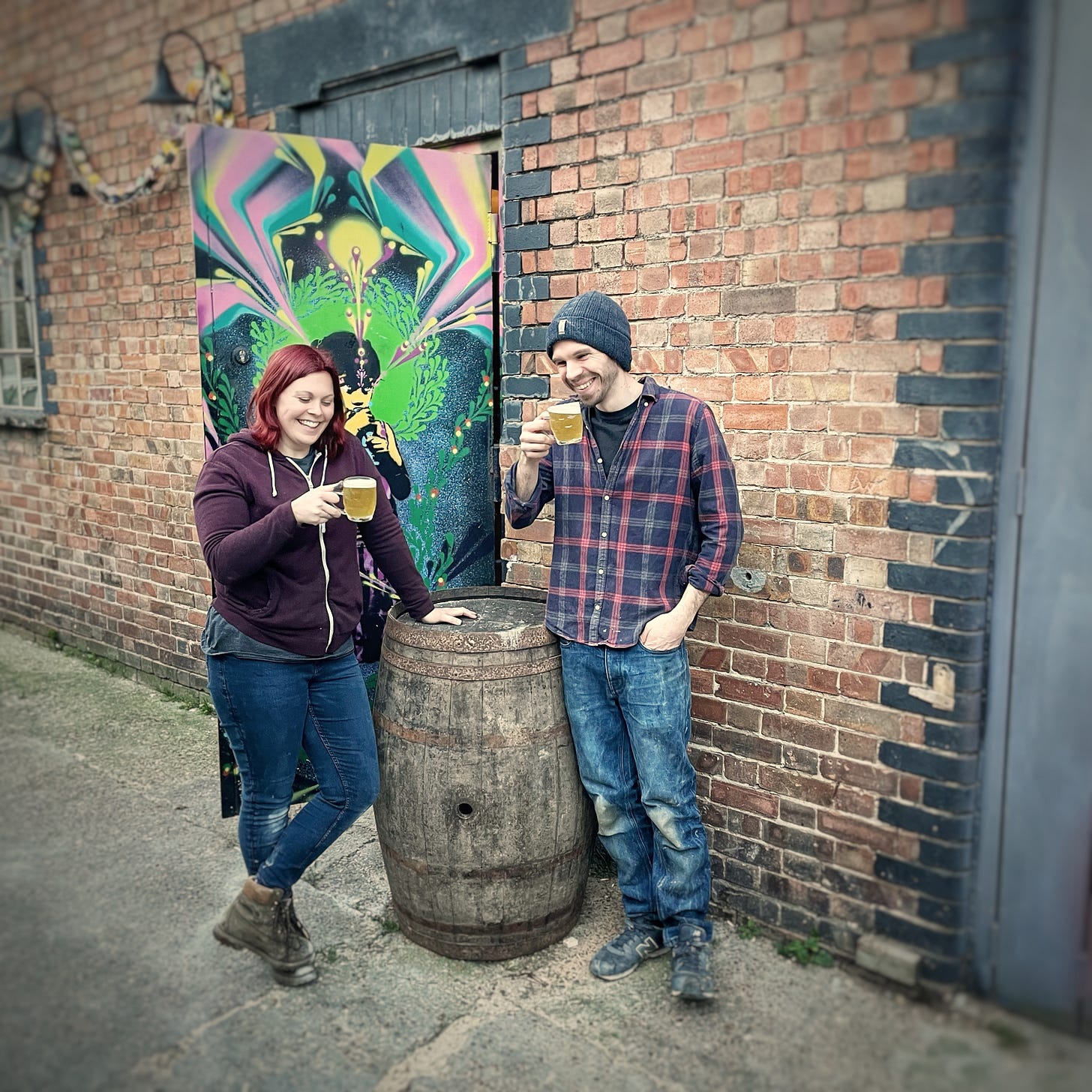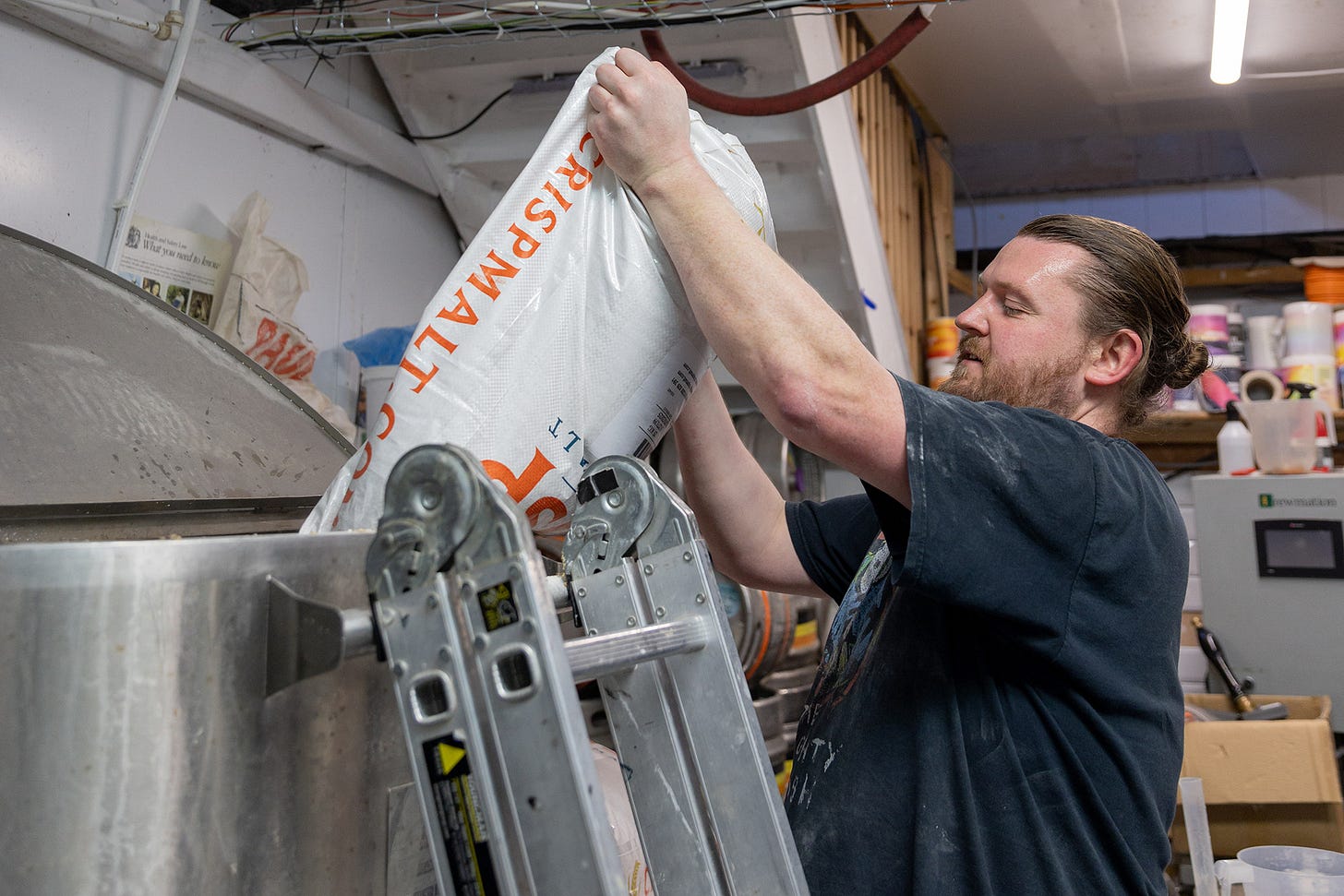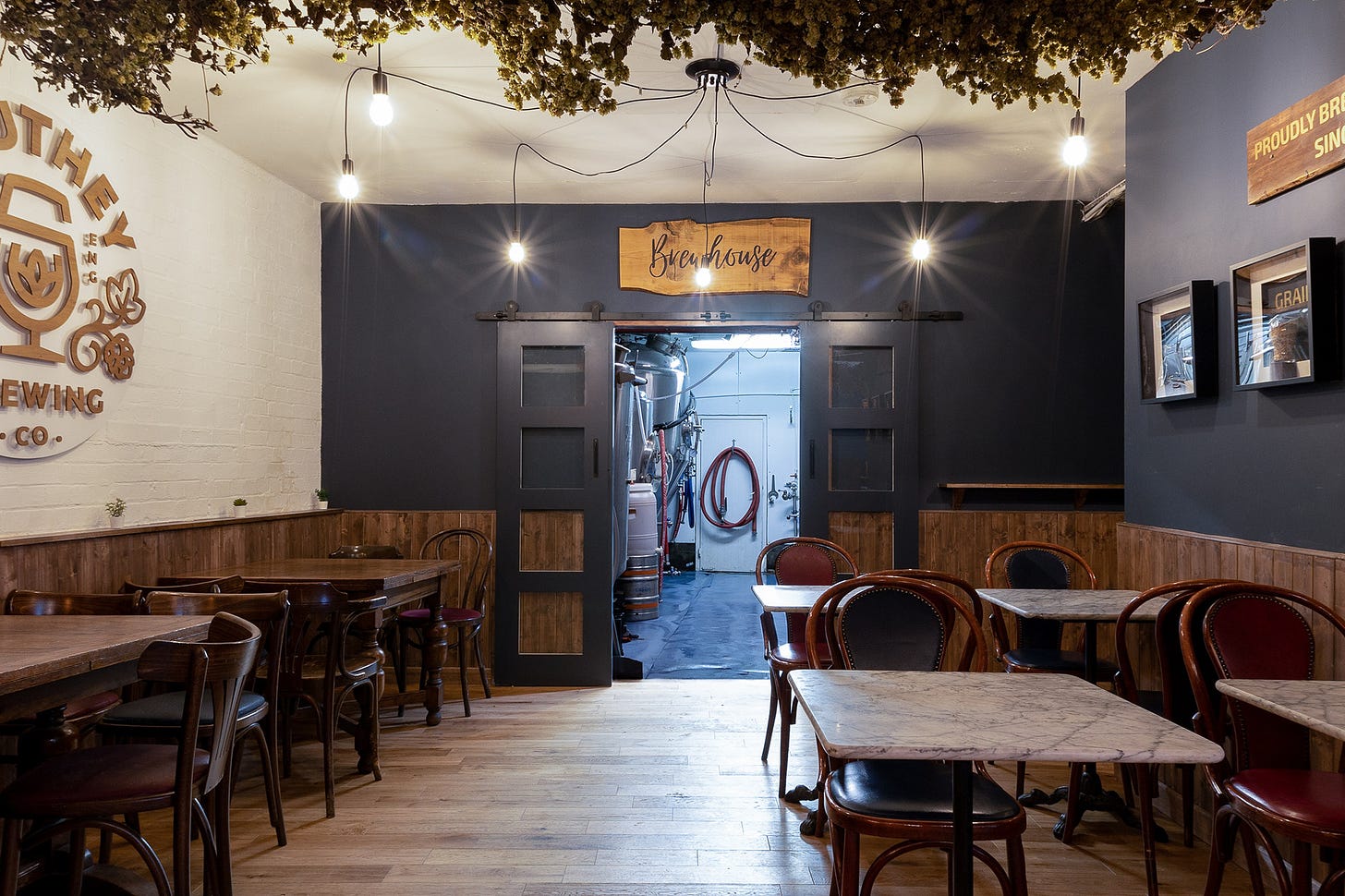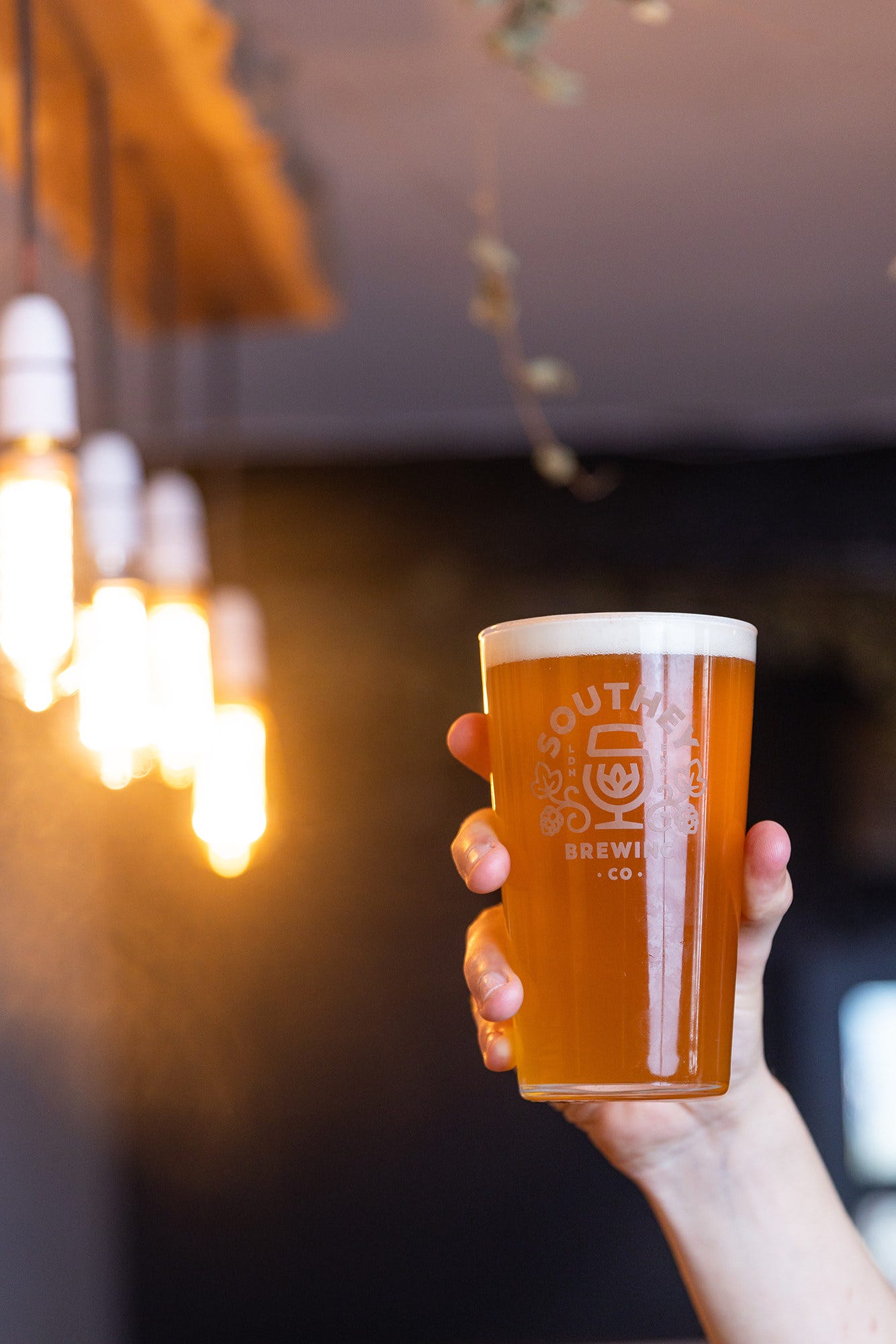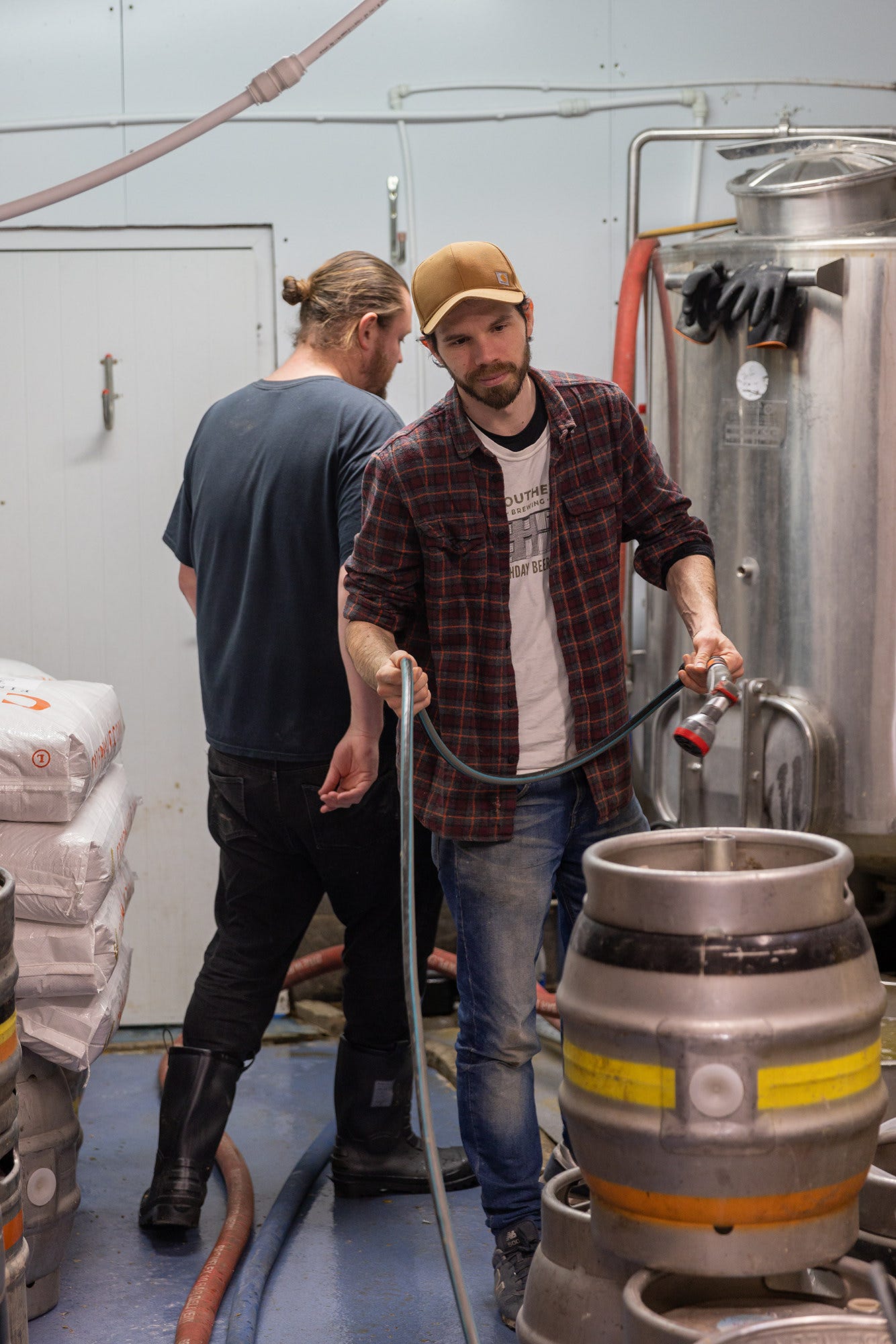Portraits Of Penge: Southey Brewing Co
I moved to Penge a little shy of a year ago. I fell in love with it all; the people and places who made up this community. I wanted to learn more, and to document my time here.
First up, Southey’s Brewery.
Southey Brewing Co, founded in 2016, is a beautiful taproom and Penge’s only microbrewery, nestled in our corner of South East London.
We’ve been multiple times, but with a taproom extension complete and a 7th birthday on the horizon, it felt like the right time to speak to them. I sat down with Sam (owner) and Charlotte (brewery manager) to learn more about Southey’s; their history, how they dealt with COVID, their experiences in Penge, and how Punk IPA ushered in the era of craft ale.
“To start with our we were a local neighbourhood curiosity,” said Charlotte. “We used to be the ‘Oh, do you know this place down a little alleyway in Penge?’” Sam laughs and echoes her point, “We were ‘The Brewery Behind The Bins.’
Southey’s isn’t the first brewery with that moniker, though. It sits on the site of the old Late Knights Brewery, where Sam got his first gig. “Late Knights came about 11 or 12 years ago. The old owner met a guy who had this spare warehouse down a back alley in Penge; he wanted to open a brewery and the rent was mega cheap.” The rest is history.
Sam had landed in Penge because of a happy accident; a brewery that just “happened to be in Penge.” Though, since COVID, Charlotte admits that “flying the flag for Penge is a legitimate part of what we do.”
COVID
While our chat was incredibly wide-ranging, I can’t really move forward without talking about COVID. It became one of the main points in our conversation, and one of the key moments in Southey’s history.
“We opened up a really small taproom in 2016,” said Sam, “though it was a bit of an afterthought. We were open until 9pm for two days a week, and it didn’t really do anything for us.” They didn’t put themselves out there which, Sam admits, “is kind of the way I am. It took a while for us to grow organically.”
Then the pandemic happened.
It was a watershed moment for Southey’s, and while Sam and Charlotte reflect with some enthusiasm on the challenges they faced, they’re in no way downplaying the horrors faced across the globe.
Hospitality collapsed. Pubs closed. People were locked down. “I had huge quantities of beer, but absolutely nothing to do with it,” said Sam. “It was like, well, how do I do this?” Talking to Sam and Charlotte for an hour or so and the answer to that question becomes clear; they are, in Charlotte’s words “doers.” In Sam’s words “bloody minded.” The next step felt obvious to Sam; they started canning their own beer. By hand. “We didn’t have any canning machinery, so I bought a lot of stuff and built this stupid contraption to can beer myself.”
So now they had the beer canned, but no means to sell it. The next step? Set up a website. “We didn’t even have a website before COVID,” reflected Sam, “so I had to learn how to do that.” Once live, the orders were “ridiculous” and Southey’s needed to mature, fast. “We had to buy significant amounts of canning machinery just to keep up with orders,” said Charlotte, “and that was when interest in us really began to grow.”
As lockdown restrictions eased, pubs slowly adapted to the new world, with many offering curb-side pickup as customers still weren’t allowed to sit in. Sam and Charlotte, as you might have guessed, adapted quickly. “We made a tap hatch!” laughed Charlotte, and as people were allowed on their one walk a day “[Southey’s] became a stop-off on that walk.”
Southey’s emerged from the other side of that period with far more of a following than before; “A hell of a lot more people knew about us locally,” said Sam. “With Charlotte on board the brewery could really stand on its own two feet and, oddly enough, it feels like Southey’s really started at that point.”
Southey’s was changing. It wasn’t just a brewery anymore, and it wasn’t just Sam and Charlotte. With a team behind them, and a flourishing tap room it was a chance for the two of them to reflect.
I paused here to ask if it was all worth it. After all, COVID was awful for so many people and so many industries, surely there were times where they thought about packing it all in?
“We aren’t those kinds of people,” said Sam, “you have to have the right mindset to get through challenges and make a success of it.” What kept them going were the challenges thrown up by being business owners, of which COVID was a major one. “Our goal has always been fairly modest,” said Charlotte, “to produce beer, and sell it to people directly,” and she echoes Sam’s thoughts; “If we were any other kind of people we would have said “Fuck this, it’s just not worth it” and walked away.”
Thankfully, they weren’t.
Brewery Trails and Punk IPAs
Along a three mile stretch between Clock House and Sydenham there are four breweries; Southey’s is joined on the route by Ignition Brewery (Sydenham), Three Hounds Beer Company (Clock House), and BR3WERY (Beckenham Road).
What could have been competition, bred collaboration.
“It’s a weird thing to think,” said Charlotte, “but actually we’re all promoting each other.” Sam illuminates me even more; “Brewers are some of the most relaxed people I’ve ever met. There’s obviously some competition at a basic business level, but it never feels like we’re competing on this bit of road.”
It wasn’t just Southey’s that faced challenges, of course, so when the owners sat down to address them, Charlotte came up with the Local Brewery Loop, a three mile walk taking in all four breweries. Start anywhere, finish anywhere, all at your own pace, and get yourself a ‘I Looped The Loop’ badge.
I’m still working on it.
“People that were going to Three Hounds, for example, might not know that we’re even here,” said Sam. “And BR3 is super interesting, but he doesn’t feel like he exists in the same way that we do.”
It’s the differences between the breweries along this stretch that’s so interesting, but also just how a stretch of road so small can house them all, especially alongside a series of larger pubs like the Moon and Stars, Pawleyne Arms, or Crooked Billet.
Charlotte posits that it’s a historical hangover, with Penge noted for the amount of pubs over the last century. Another explanation is the rise in popularity of craft beer.
“We’ve all carved out a bit of a niche for ourselves,” says Charlotte. “I think craft beer has kind of shifted. It used to be,” she pauses, “I guess nerdy is the best way to describe it?” Sam echoes the thought. “100% nerdy! It used to be smaller groups of people travelling massive distances to find very specific types of craft beer, but now everyone is drinking it.”
“Craft is now an umbrella term for “Oh we do something a little bit interesting.””
Sam and Charlotte are passionate about a lot of things, and it should be no surprise that beer is one of them. Our discussion about craft, in particular, was fascinating:
“You’re kind of fed this narrative that craft beer is cool and trendy and different,” said Sam, “but it’s so so commonplace now. You can buy craft beer in Tesco!”
Southey’s is traditional, accessible, and “non-judgemental” in its approach. “We do this beer,” said Sam, “and we do it well.” “People can come here,” echoes Charlotte, “knowing nothing about craft beer, or not wanting to know anything about it. You can come in, have a nice beer, and we’ll leave you alone. Or”, she laughs, “we can talk your ear off about craft!”
There have been changes over time in the craft beer industry. Changes in production methods, changes in the demands of the consumer, but the main change, said Sam, “is the sheer volume of people who are interested.” When Sam started his journey at Late Knights, the main selling point for many breweries was simply that their beer was “a bit different.”
“Everything was less complex, and none of us really knew what was good. There were times in those early years where a lot of the beer was, to be frank, objectively bad.” As more and more people became interested, the demands of what you could or couldn’t produce shifted. “Everyone was used to making murky, weird beer and sticking it in brown bottles with handwritten labels on it and thinking that was good enough,” but the surge in interest “forced something that was too rough around the edges to step up and run itself like a proper industry.”
There’s an elephant in the room as we discuss the modernisation and popularisation of craft beer; Brewdog.
“I think the growth of the industry is largely down to them,” said Sam. “Both them and Beavertown really opened the door to the mainstream audience.”
Earlier in our conversation, Sam alluded to the fact that you can buy craft beer in supermarkets now, expanding the reach of the industry even further. The problem, however, is that Brewdog, Beavertown and their ilk, “can produce beer incredibly cheaply, and sell it cheaply.” “You can buy this stuff in the supermarket for far too cheap,” said Charlotte, “you can buy it for way less than you would a pint in the pub. It makes it harder and harder for some of the smaller people to exist when the expectation from consumers and wholesalers is to be able to buy “craft beer” at a fairly low rate.”
The rise of national companies isn’t unique to the brewing industry, but it was one that used to be dominated by regional breweries. “You’d go into a pub and they’d sell the regional brewery’s flagship beer,” said Sam, “and that’s what you’d expect up and down the country. The problem is there’s so much craft out there now, and so many breweries, that people don’t really know what’s any good. They can just buy a Punk IPA, which they already know. In an ideal world, our larger or our pale ale would be sold at every pub in Penge, but that won’t happen because a) There are so many breweries, and b) as we talked about, the rise of cheaper alternatives from “bigger companies” means we end up as the ‘guest’ choice rather than the mainstay.”
So how do you stand out in a market like this? Well, Sam and Charlotte loop us back to an earlier point; “we need this place to have something as a point of difference.”
Whether that’s their approach to brewing, a smaller “more traditional” menu, or even the space itself. “We’re doing business here at the taproom,” said Charlotte, “ultimately we don’t want somewhere two minutes up the road selling our beer, because we want people here, having a nice time in the space that we’ve built.” Sam agrees, “We’re a taproom who prides ourselves on the beer we have on tap, which are all brewed right here. We talk about ‘Beer Miles’ in our industry [the amount of distance a beer travels from brewery to consumer], and here there are none.” He gestures towards the brewery door, “because it moves from that room, to this one.”
From Behind The Bins to The Future
There’s a hint of trepidation in Sam and Charlotte when I ask about what’s next, and it’s perhaps easy to see why. The shifts and lurches that the business has gone through over the years meant there was no time for a 5-year plan, with many of their decisions driven by circumstance or an unexpected need.
They’re also hesitant to be as celebratory as I am about their success.
“We’re still feeling the effects of COVID,” said Sam, “with many pubs and breweries still closing. Not that we’ve ever really pushed it, but our ability to sell in to wholesale is dramatically reduced as a result.”
After a little pushing, Sam cracks a smile and gives me a rough plan:
“Look, this is so so basic, but the goal really is to have a nice, sustainable business. We’re not on a knife edge here, far from it, but we want to be in a position where the five of us can work here comfortably; enjoy our jobs, get paid a bit more, and take pride in the work. I’d like to be able to upgrade a couple of bits of equipment and…” he laughs, “I’d probably bring someone in to do all the paperwork!”
As we bring our chat to a close Charlotte tells me a little more about the team, who she describes as “great people.” “We have this lovely little team now, and even those people who have come and gone, I’m really proud of the type of environment that we’ve cultivated here. I think without them we couldn’t have pushed as hard as we did.”
“At the end of the day when we put on a big event, like our birthday, everybody has a huge smile on their face. People are dancing to music, and making friends and that’s amazing, we’ve done that! Being this nice local community entity really gets me up in the morning.”
This is something that both Sam and Charlotte are keen to stress when I asked them to reflect on their journey so far; “We’ve believed in Southey’s all the way through,” said Charlotte. “It’s something we all believe in hugely, and, God, just how lucky are we do something that we love to do?”
Sam is even more succinct, glancing over to the taproom extension; “Fuck man,” he says with a smile, “I just really, really wanted to build something.”

